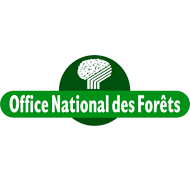One of the key actions of the SUDOE MONTCLIMA project is the design and implementation (testing and development) of common Action Plans for prevention and management of natural hazards, which will be validated and/or improved through pilot trials.
One of these pilot trials, led by FORESPIR and AR+I, is being carried out in the parish of Escaldes-Engordany in the Calm de Claror area situated at 2500 meters a.s.l. where on July 21, 2015, a big storm caused severe erosion in the terregalls (small stone and earth screeds) of the area and, consequently, a significant disturbance of the Claror river (a tributary of the Madriu river) which made the waters of the parish of Escaldes-Engordany (15,000 inhabitants) unfit for human consumption for several days. Once the area has been weakened, subsequent low-intensity rainfall (> 15 mm) ends up generating episodes of exceptional turbidity, which cause new cuts in the supply of drinking water.

Once the source of the problem has been identified, those responsible are aware of the need to consolidate the sediments and slow down the erosive process with the aim of reducing drinking water supply cuts in an area with very steep slopes and little vegetation. Then, the objective of the control of erosion and turbidity in surface water in the upper part of the Claror stream basin head (Andorra) was realized through the application of nature based solutions with the clear objective of prioritizing respect for the natural environment of this World Heritage Cultural Landscape (UNESCO) protected area. It is for these reasons that, for erosion control work in the Claror basin, we have focused on the use of landscape bioengineering techniques. The main biotechniques of environmental restoration applied were:
1) Sheep remediation works:
1.1) Regularization of bogs and carcaves by slapping with a flock of sheep.
1.2) Fertilization of the areas to be sown due to crowding of the herd,
2) Sowing in 1m bands of eroded areas with Festuca eskia,
3) Construction of micro dikes of ramage for the retention of flow debris in the sorghum at the head of the basin.
4) Construction of fine retention dam.
5) Restoration of the banks of the Claror river.

Map of the location of the different works carried out since 2015.
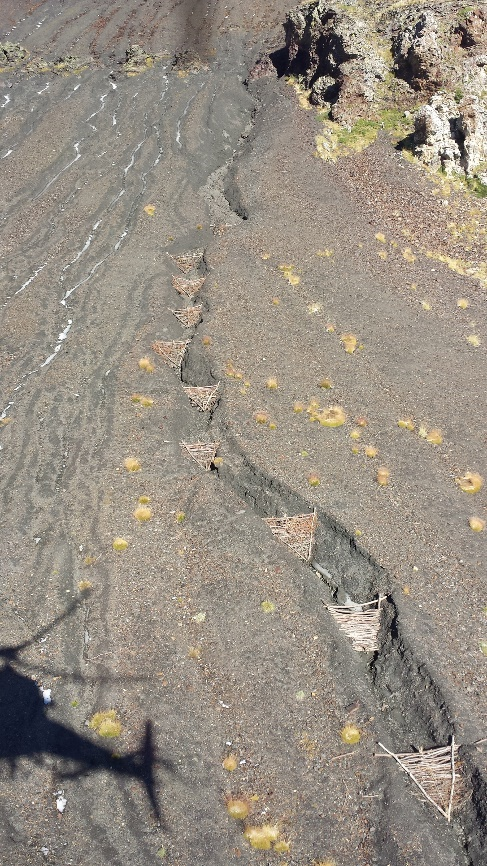
Micro dikes of ramage for the retention of flow debris.
The realization of an experimental trial in 2015 through autumn sowing of Festuca eskia, with one plot fertilized with sheep manure and the other without, allowed the technique to be validated and adjusted to be applied on a large scale in 2016, which has also worked very well. The revegetation of the bare soil aims to stabilize the sediments and the eroded material of recent surface exposure. The revegetation began with a single species, the grass (Festuca eskia), since it is the most predominant plant in the pastures around the area to be stabilized, and practically the only one that colonizes with high coverage the poorest soils and with more slope (observed in staggered configuration on slopes of up to 34°). In addition, it is a rustic plant, little appreciated by livestock, with predominant vegetative reproduction and very well adapted to the rigors of the high mountain climate. In fact, it is a Pyrenean endemism. Through the establishment of a grass cover, it is intended to provide protection against the direct impact of raindrops on the ground (splash erosion), and also because of the increased cohesion in the ground provided by the roots and the organic matter, this without underestimating the increase in hydraulic roughness provided by the leaves and the stems of the plants that, acting as a filter, limit laminar erosion. The erodibility of a bare soil is estimated to be about 250 to 400 times (factor C of the universal soil loss equation according to criteria universal soil loss equation) higher than the same soil completely covered (>95%) with herbs, ceteris paribus. The spectacularity of these figures makes it vital to quickly revegetate barren areas in order to control water pollution.
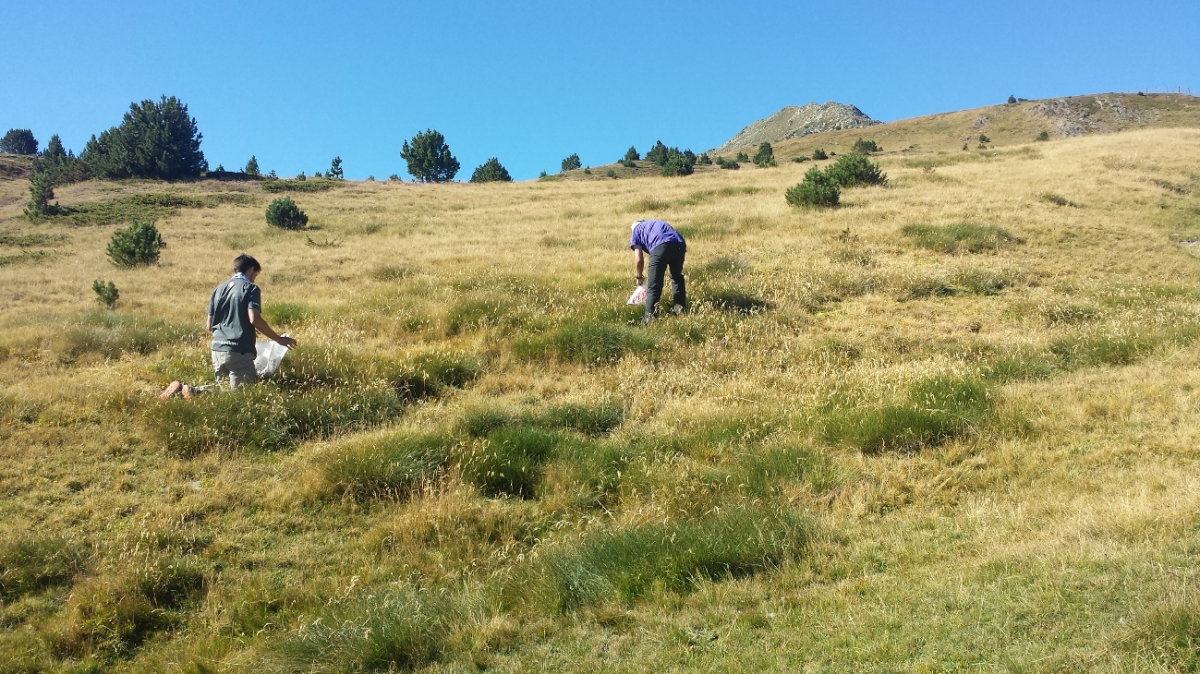
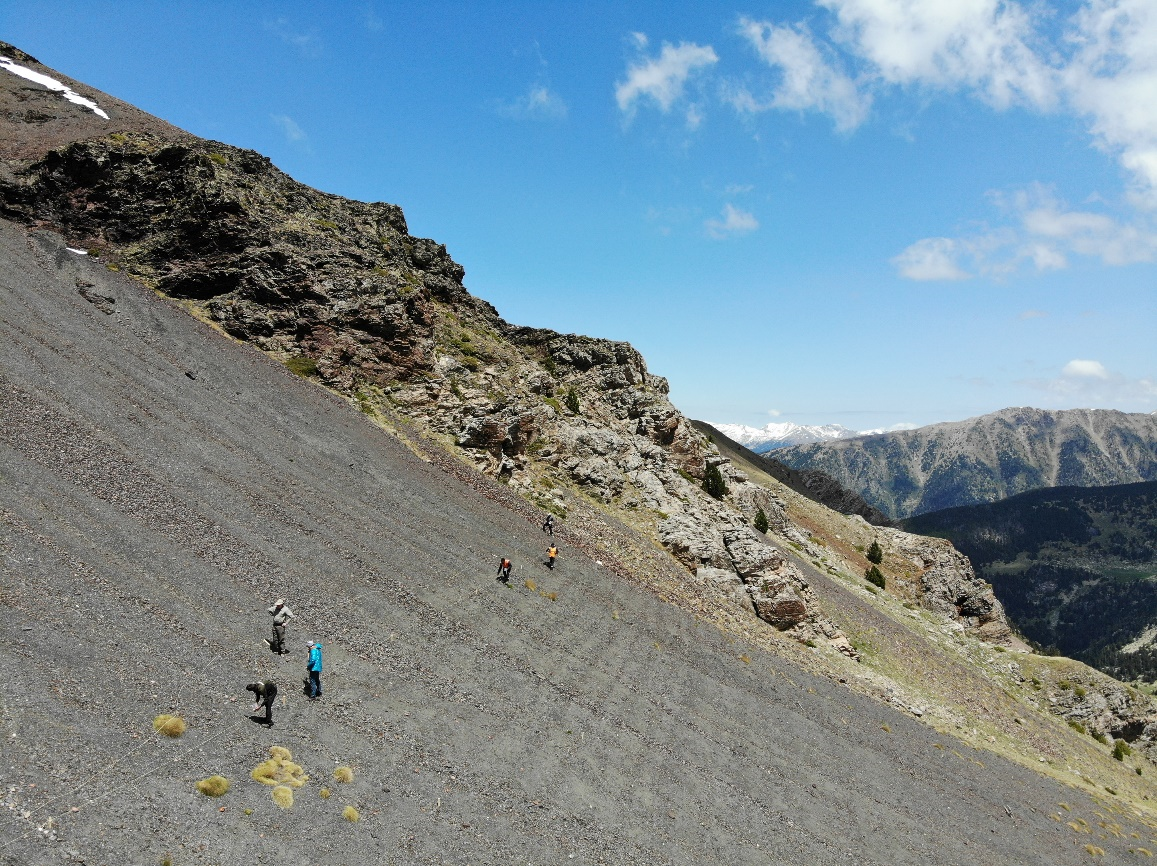
Then, in pilot trials of the MONTCLIMA project the objective was to strengthen and amplify the vegetated surface. Considering the lack of commercial seed of this species, lawn seeds were collected manually in August 2021. The sowing was done manually in the month of May 2022 and in order to cover more surface, sowing strips of one meter width were made every two meters (sown meter - barren meter), and the seeds were covered with protective layer (mulch) of straw to protect them from water and wind erosion, from the cold during germination and, above all, from drying out the soil during summer droughts.
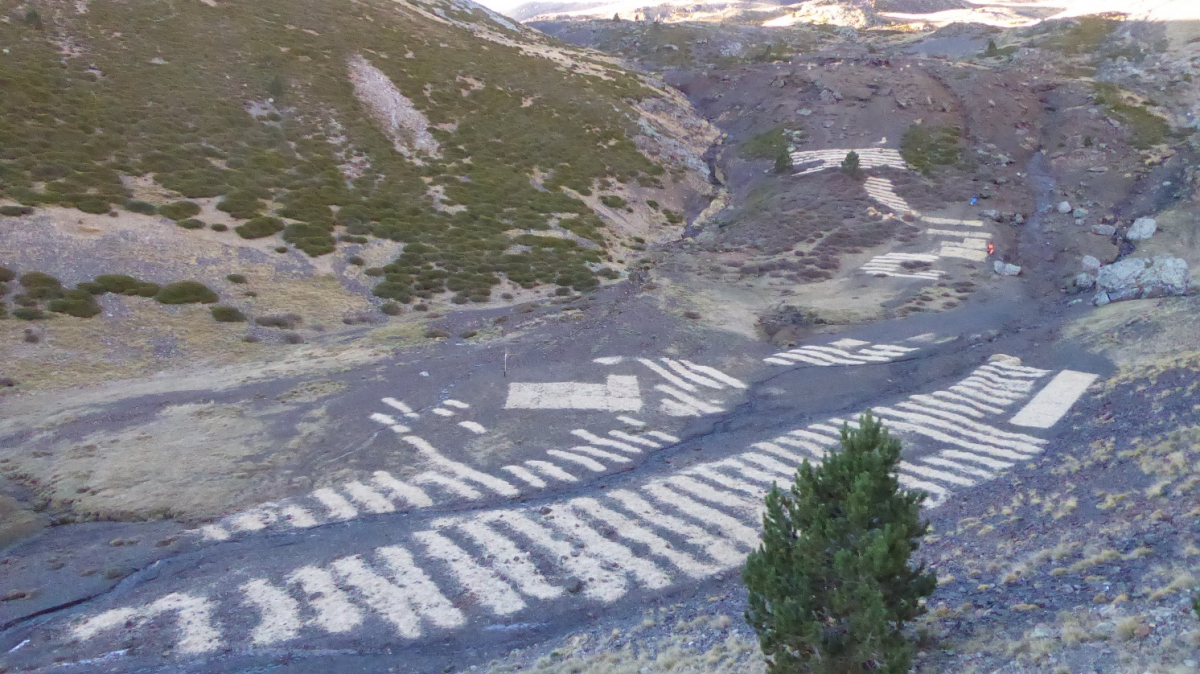
The application of sheep manure increased biomass production by 8 times. The torrential lava containment micro-dykes have worked properly. Erosion control has been very satisfactory, since the outbreak in 2017, with no new drinking water cuts. The sheep remediation works applied in the corrective measures in the basin of Claror river have given very satisfactory results, in harmony with the environment, and demonstrate the potential of integrating pastoral activity to achieve synergies with the environmental quality needs that today's society requires.
With the various environmental restoration works, some of them pioneers in the role of stabilizing land damaged by intense erosive processes, carried out in the area affected by the torrent, it is expected that three to five years of follow-up will be necessary post-sowing, continuing with the application of corrective measures, to complete and maintain the micro-dykes and, above all, to fix the vegetation to the point that the vegetation cover can be considered successful and, consequently, controlled erosion in the levels before the torrent, or even lower. These works will greatly accelerate the fixation of a large part of the finer sediments that cause great turbidity in the water of the Claror river and will minimize the risk of cuts in the water supply to the town of Escaldes-Engordany.
Finally, it should be noted that the results of this restoration will be of great use if, in the future, protocols or contrasted strategies are to be developed to control soils damaged by intense erosive phenomena that will undoubtedly, sooner or later, affect us again.







